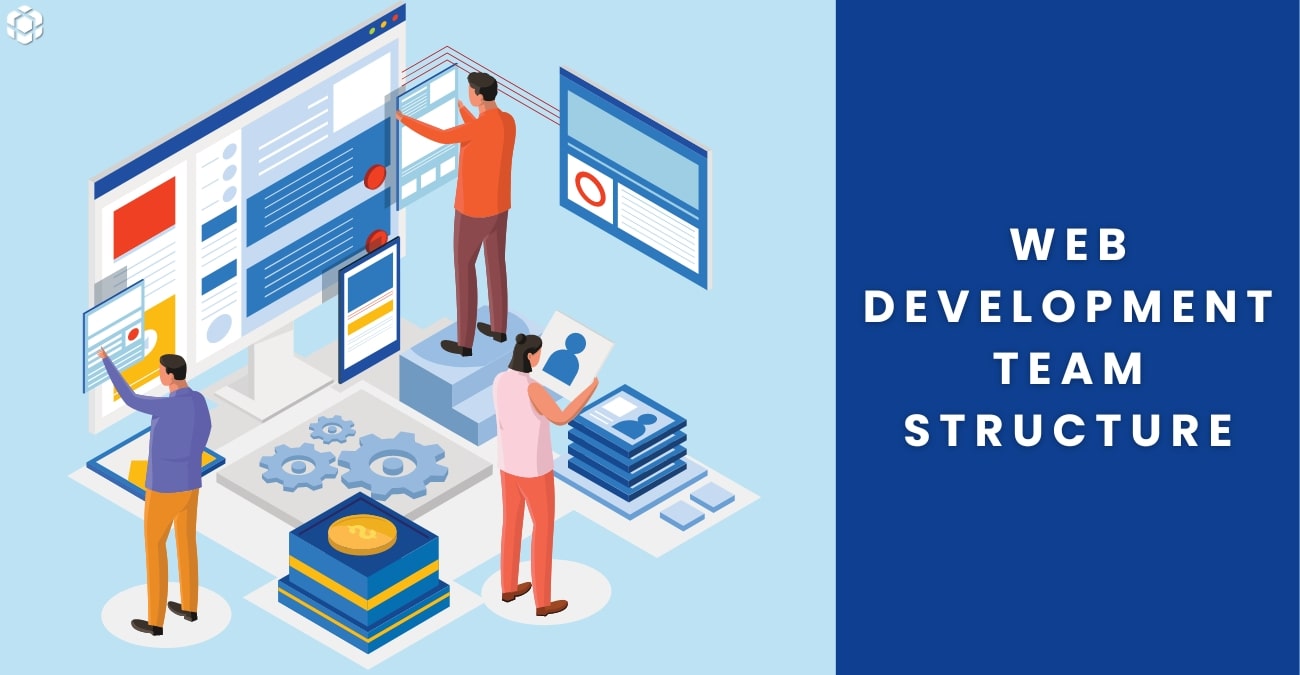
Are you about to start the process of building your web development team? Hold on! We want you to take note of a few things before you proceed with the hiring and team-building process.
You can be confident that creating a development team is not difficult at all—in fact, it’s pretty simple—as long as you are aware of the pertinent information and know where to look. Web development teams are now not what they used to be, as the processes constantly evolve.
There are added technicalities, roles, and responsibilities that you have to consider before building your web development team. This article delves into the essential considerations you should bear in mind before establishing your web development team, exploring these factors in depth.
What makes a great web development team?
Like any other team, an effective web development team is composed of a diverse group of individuals who all contribute their knowledge, skills, and creativity to the group. While it is easy to make use of the advancing technology and build websites in no time through tools and software, the efficacy of human creativity can never be replicated.
Therefore, your web development team is very important, and the only way to ensure its effectiveness is to maintain a comprehensive, well-organized structure. The team’s strength lies not just in technical prowess but in their adaptability, eagerly embracing new technologies and methodologies. With a foundation built on solid project management and problem-solving abilities, they navigate complexities with finesse, ensuring every challenge becomes an opportunity for innovation.
But how to build such a well-rounded team? We’ve gathered some vital information to help you assemble the finest web development team possible for your projects since we recognize the severity of the question.
Roles and responsibilities of your web development team
Before we jump into the nitty-gritty of how to build your web development team, it’s critical to understand each team member’s roles and responsibilities, as well as the significance of their contribution to the project.
Project Manager
The project manager serves as the ultimate person in charge and oversees the whole development process. One of their primary responsibilities is to ensure timely delivery while also managing a smooth workflow with minimal errors and risks. Although their job scope doesn’t require much coding knowledge, they still have to be familiar with the development process to understand what is achievable.
These managers are adept at aligning client requirements with the development process, constantly refining plans to meet evolving needs. Their ability to pay close attention to detail and to plan and monitor the project ensures that it proceeds without hiccups, meeting deadlines and quality standards. Ultimately, they’re the ones who synchronize the team’s efforts, ensuring that the end result aligns perfectly with the client’s vision.
Primary tasks handled by project managers include:
- Creating comprehensive project plans defining tasks and milestones.
- Identifying potential risks and developing strategies to mitigate them
- Facilitating effective communication and collaboration among team members
- Overseeing testing processes to ensure the final product meets quality standards and client expectations
Product Manager
The product manager, aka the CEO of the product, plays a pivotal role in ensuring the website not only functions well but also aligns with its economic objectives. They serve as a bridge between a website’s business strategy and its technical implementation. Your vision of the project is analyzed by these product managers and business analysts and translated into comprehensive technical implementations.
Moreover, they are in charge of outlining the necessary features and the intended user interface. They collaborate closely with engineers to develop the technical specifications and make sure cross-functional teams have access to all the data they require to complete a product and bring it to market.
Some major tasks undertaken by product managers include:
- User Research and Understanding
- Defining Product Vision and Strategy
- Gathering Requirements
- Collaborating with Development Teams
Solution Architect
The solution architect is in charge of fully comprehending the online application and producing mockups that link the various website features. They have to ensure that users can navigate between pages to view content or carry out particular tasks.
The ability to effectively design and develop new technology solutions that meet business needs and bridge the communication gap between technical and non-technical experts involved in your web development project are two of the main reasons why your company should hire a solution architect expert.
Web Developer
Web developers are magicians who build websites using their knowledge and expertise in various programming tech stacks. Web developers can be categorized into two different types:
Front end developer
Regarding user experience and interaction, front-end developers are at the forefront. Their main priority is creating the website’s user-facing components. Their proficiency in HTML, CSS, and JavaScript frameworks, such as React or Angular, allows them to meticulously transform design mockups into aesthetically pleasing and responsive web interfaces. They work closely with the design and back-end teams to ensure that the website is responsive across a range of devices and browsers.
Front-end developers’ main tasks:
- Ensuring Cross-browser Compatibility
- Building UI Components
- Ensuring Accessibility
Back end developer
The server-side functionality that drives the website is managed by the back-end developers. They are responsible for building the infrastructure and logic that powers the functions of the website. They design the server-side components, creating databases and APIs that manage data retrieval and manipulation using languages like Python, PHP, or Node.js. Their duties also include tying the front-end UI and server-side logic together to create a unified and useful website.
Back-end developers’ main tasks:
- Server-side logic implementation
- Database management and optimization
- API development and integration
- Security implementation and data protection
UX/UI Designer
Good design is critical for any website, and that work of art is produced by the team’s UX/UI designer. This role is generally fulfilled by one person, but many companies tend to hire separate user interface and experience creators.
They specialize in decoding user behavior and translating these insights into intuitive website layouts, pivotal for engaging users and driving actions such as purchases or service inquiries. Their role profoundly impacts business metrics, optimizing conversion rates by tailoring the web experience to suit user preferences.
Making a product or service accessible, pleasurable, and user-friendly is the responsibility of a UX designer. The term UI is most commonly associated with digital design for websites and applications, even though many businesses design user interfaces. Although each product and company has its own unique UI design process, the fundamental stages are generally the same.
Primary tasks performed by the UX/UI designer include:
- User research and analysis
- Wireframing and prototyping
- Designing user interfaces
- Collaboration and communication with teams
- Usability testing
Quality Assurance Engineer
The quality assurance engineer fulfills an integral role in the web development team as they make sure that the finished product meets all the protocols and standards defined by the organization, client, and other external entities. They work with developers and designers to ensure that the development process meets organizational principles.
QA engineers design multiple test cases implemented on various aspects of the development process and the developed product. The pass or fail status of those tests determines whether the quality is being maintained or not. Quality control and assurance are major steps in web development, which, if skipped, can lead to serious consequences and may even put the company’s reputation on the line.
Building your web development team
Now that you have a clear idea about the roles and responsibilities of a web development team when assembling your new web development team, there are a few best practices you should know about. Make a note of the things you need to avoid as well when assembling your development team.
Best practices
- The most laborious and time-consuming step in building a web development team is hiring developers. A lengthy recruitment process is needed to sift through potential candidates thoroughly. As a result, it’s advised that you keep your tech stack as precise and focused as possible when hiring.
- Instead of concentrating on one role or responsibility, try to hire a diverse group of people who can perform a variety of tasks concurrently and have a wide range of skills.
- Encourage a culture of feedback and adaptability. Regularly gather feedback from team members and stakeholders to make necessary adjustments and improve team dynamics and processes.
- Plan team training and education sessions to ensure that everyone is knowledgeable about the latest technologies. Web development is a field that is always changing due to the rapid advancement of tools. This will enable them to broaden their skill set.
Mistake to avoid
- Keep your budget in view while hiring to create your web development team. Depending on your needs, you can form a team with a low budget or a high budget; the key distinction is the variety of expertise within each team.
- A team that lacks clarity regarding project goals and objectives may become confused and misaligned. Make sure that everyone is aware of the plans, parameters, and anticipated results of the project from day one to avoid any unfavorable outcomes.
- Hiring hastily without assessing the candidate’s fit for the team can lead to mismatches in skills or work culture. They might wind up becoming an extra resource rather than bringing anything of value to your team. Therefore, take time to vet candidates thoroughly to ensure they align with the team’s dynamics and goals.
- Avoid being rigid in your task operations and workflows. Be receptive to fresh perspectives and criticism on how to make work processes better so that new and efficient end systems can be produced.
Why choose Codesy’s web development team?
Web developers, or better yet, the web development team at Codesy, are exemplary, consisting of all the significant roles that should exist in a top-notch development group. Whether it’s an exceptional project manager or a proficient business analyst, Codesy has made sure to hire only the best.
The web development teams at the company provide an extensive range of services, including website optimization, CMS development, front-end and back-end development, E-commerce web development, etc. We have a high client satisfaction rate because our managers and developers work closely with clients, putting their needs first above all else.
Apart from this, our QA engineers also work tirelessly to ensure quality standards are thoroughly maintained. So, if you are looking to outsource your work to an external web development team, Codesy is right at your service.





